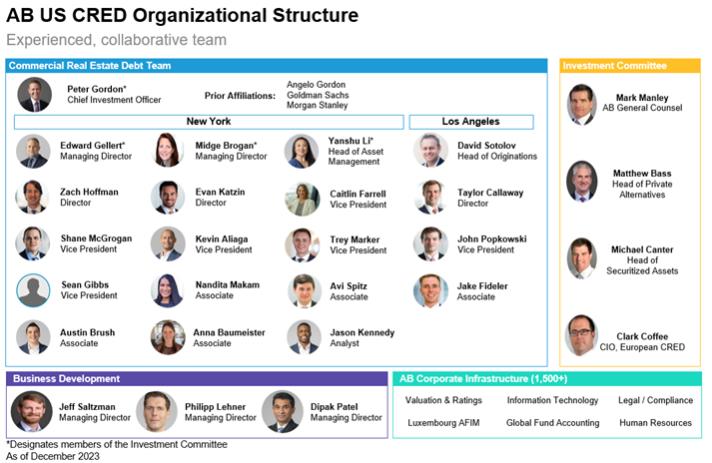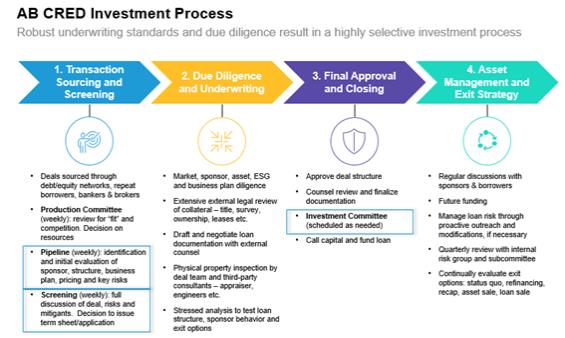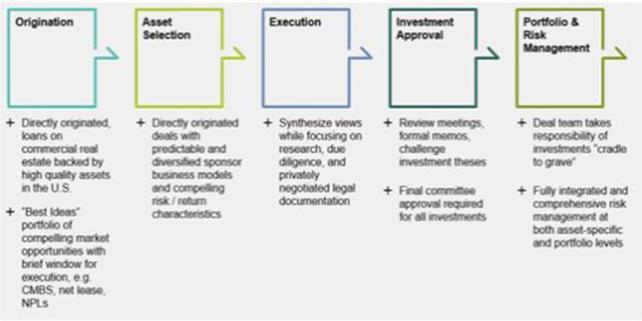Pursuant to the Management Agreement at the end of each calendar quarter, the Investment Manager is entitled to receive an incentive fee (the “Incentive Fee”) equal to the difference between (x) the product of (A) 15% and (B) the difference between (1) Core Earnings (as defined below) of the Company for the most recent 12 month period (or such lesser number of completed calendar quarters, if applicable), and (2) the product of (I) the weighted average of the Company’s NAV of the three previous calendar quarters (or such lesser number of completed calendar quarters, if applicable) and the Company’s NAV as of the beginning of the then current calendar quarter, and (II) 6% per annum, and (y) the sum of the Incentive Fee previously paid to the Investment Manager with respect to the first three calendar quarters of the most recent 12 month period (or such lesser number of completed calendar quarters, if applicable); provided, that no Incentive Fee is payable to the Investment Manager with respect to any calendar quarter unless the Core Earnings for the twelve (12) most recently completed calendar quarters (or such lesser number of completed calendar quarters following the date of the Initial Closing Date is greater than zero. The Incentive Fee is prorated for partial periods, to the extent necessary, based on the number of days elapsed or remaining in such periods as the case may be. Unless otherwise determined by the Investment Manager, the Company’s NAV at the beginning of a calendar quarter for purposes of this Incentive Fee calculation shall be equal to the Company’s NAV as of the end of the previous calendar quarter as increased by capital contributions and decreased by repurchases.
For purposes of the foregoing, “Core Earnings” means the net income (loss) attributable to the holders of Units, computed in accordance with GAAP, including realized gains and losses not otherwise included in net income (loss), and excluding (i) the Incentive Fee, (ii) depreciation and amortization, (iii) any unrealized gains or losses or other similar non-cash items that are included in net income for the Applicable Period (as defined below), regardless of whether such items are included in other comprehensive income or loss or in net income and (iv) one-time events pursuant to changes in GAAP and certain material non-cash income or expense items, in each case after discussions between the Investment Manager and the Board and approved by a majority of the Board. “Applicable Period” means the calendar quarter (or part thereof) for which the calculation of the Incentive Fee is being made.
The Investment Manager is entitled to receive an Incentive Fee with respect to any Units that are repurchased at the end of any calendar quarter (in connection with repurchases of such Units pursuant to the Unit repurchase plan) in an amount calculated as described above with the relevant period being the portion of the calendar quarter for which such Unit was outstanding, and proceeds for any such Unit repurchase will be reduced by the amount of any such Incentive Fee.
In the sole discretion of the Company, the Incentive Fee may be waived, reduced or calculated differently with respect to the Units held by certain Members, including, without limitation, a Related Investor, so long as such waiver, reduction or calculation does not result in a preferential dividend under Section 562(c) of the Code.
Due to the fact that the Incentive Fee is calculated at the Company level in the aggregate and not charged separately with respect to each Member, it is possible that the Company may be charged the Incentive Fee despite the Member’s particular investment in the Company having a negative performance during a calendar quarter.
For the years ended December 31, 2023 and 2022, the Company incurred Incentive Fees of $1.5 million and $0.3 million, respectively of which the Investment Manager waived $0 and $0, respectively. As of December 31, 2023 and December 31, 2022 the Incentive Fees payable amounted to $1.5 million and $0.3 million, respectively and are included in the consolidated balance sheets in the accompanying financial statements.
Pursuant to an Expense Limitation Agreement, as amended on June 20, 2022, the Investment Manager may determine to cap Organizational Expenses and Company Expenses in the aggregate that are borne by the Company to the extent necessary to prevent Organizational Expenses and Company Expenses, on an annualized basis, from exceeding a percentage determined by the Investment Manager in its discretion. This cap will be maintained until the third anniversary of the Initial Closing. Pursuant to the cap, any fees waived and expenses borne by the Investment Manager may be charged to the Company during the three year period that the Expense Cap is in place, provided that no such payment will be made that would cause the Company’s expenses to exceed the same cap. Extraordinary expenses (including, but not limited to, litigation expenses, indemnification expenses, lender liability expenses and other expenses not incurred in the ordinary course of the Company’s business), the Management Fee, the Incentive Fee, interest expenses, financing costs and expenses, reserves for and costs associated with determining current expected credit losses, loan servicing fees and expenses and other fees and expenses incurred in connection with the acquisition, disposition, ownership and operating of the Portfolio Investments will not be included as Company Expenses for purposes of calculating the expense cap.
For the years ended December 31, 2023 and 2022, the Company incurred expenses in excess of the Expense Cap totaling $0 million and $0.4 million, respectively. As of December 31, 2023 and December 31, 2022 the Company is owed reimbursements of $0 million and $0.9 million, respectively, from the Investment Manager and is included in the consolidated balance sheets in the accompanying financial statements. It is expected the reimbursement amounts will be fully paid by at the third anniversary of the initial closing or as soon as practical.


